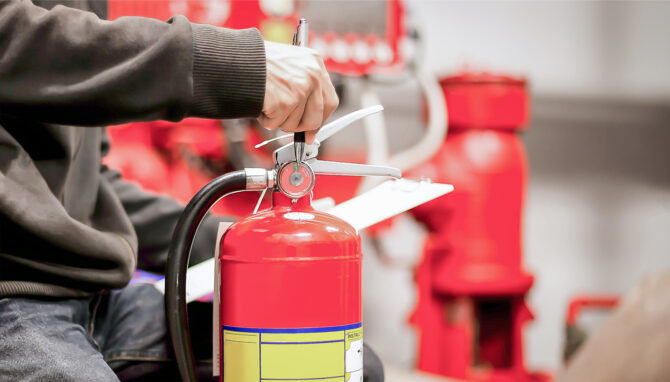Understanding CDM Regulations: Commercial Client Duties Explained
If you’re a commercial client commissioning construction work in the UK, you may not realise that you have legal duties under health and safety law. The Construction (Design and Management) Regulations 2015 (CDM 2015) place specific responsibilities on commercial clients to ensure health, safety, and welfare are prioritised from the very beginning of a project.
In this blog, we’ll break down what those duties are, why they matter, and how you can fulfil them without getting buried in red tape.
What is a Commercial Client under CDM?
A Commercial Client is defined as any organisation or individual (e.g., company, charity, school, landlord) who commissions construction work as part of a business.
This includes:
- Office refurbishments
- Shop fit-outs
- Building extensions
- Repairs and maintenance
- Demolition works
- Civil engineering and infrastructure projects
If you’re having this type of work done, you are a duty holder under CDM 2015, and that carries legal responsibilities.
What are your legal duties as a Commercial Client?
Under CDM 2015, the commercial client has a pivotal role in ensuring health and safety is integrated throughout the project. Your main duties include:
1. Make suitable arrangements for managing the project
You must ensure that health and safety is properly planned and managed from start to finish. This includes:
- Appointing the right people and organisations (see below)
- Allocating enough time and resources for safety
- Setting up effective communication channels
- Ensuring cooperation and coordination among all parties
✅ Tip: These arrangements should be proportionate to the scale and complexity of the project.
2. Appoint Duty Holders
For projects involving more than one contractor, you must:
- Appoint a Principal Designer (PD) – to plan, manage, and coordinate the pre-construction phase.
- Appoint a Principal Contractor (PC) – to manage the construction phase.
If you fail to do this, you automatically take on their duties by default—a liability you want to avoid.
3. Ensure Duty Holders have the Skills, Knowledge and Experience (SKE)
Before appointing anyone, you must check they are competent and capable of carrying out their role safely and legally.
️ This includes architects, designers, engineers, contractors, and health & safety consultants.
4. Provide Pre-Construction Information
You must supply relevant health and safety information to your designers and contractors, such as:
- Existing drawings and surveys
- Asbestos reports
- Utilities maps
- Site constraints
- Previous incidents
This information helps them design out risks and plan safe working methods.
5.Ensure a Construction Phase Plan (CPP) is in place
Before any construction work starts, there must be a Construction Phase Plan prepared by the Principal Contractor. You must make sure this is done and that it is adequate for the risks involved.
6. Ensure suitable welfare facilities are available
It’s your duty to ensure that adequate welfare facilities (e.g. toilets, wash stations, rest areas) are provided from day one of the construction phase. This responsibility can be passed to the Principal Contractor—but you are still expected to ensure it’s being done.
7. Maintain ongoing oversight
Even after appointments are made, your responsibility doesn’t end. You must monitor that suitable arrangements are maintained throughout the project.
This doesn’t mean micromanaging—but you should:
- Request regular updates
- Carry out spot checks (or appoint someone to do so)
- Ensure clear communication channels are maintained
8. Ensure the H&S File is prepared
At the end of the project, the Principal Designer must hand over a Health and Safety File containing essential information for future maintenance, alterations, or demolition.
You, the client, must:
- Ensure it’s prepared
- Keep it safe
- Pass it on if the building is sold or transferred
What happens if you don’t comply?
Failing to meet your CDM duties can lead to:
- HSE enforcement action, including Improvement or Prohibition Notices
- Prosecution, leading to unlimited fines or even imprisonment for serious breaches
- Delays and cost overruns if safety issues halt the project
- Reputational damage—especially if a worker is injured or killed on your project
Remember: ignorance is not a defence under UK health and safety law.
✅ How to Comply (Without Overcomplicating)
- Engage a competent CDM consultant or H&S advisor early
- Use pre-qualification checks for all contractors and designers
- Keep clear records of decisions, appointments, and key information
- Set the tone from the top—make safety a visible, non-negotiable priority
- Use the HSE’s CDM 2015 Client Guidance (INDG411) as a reference
Final Thoughts
Health and safety in construction starts with the client. The Construction (Design and Management) Regulations 2015 make it clear: if you commission the work, you help carry the responsibility for making it safe.
But with the right support and early planning, fulfilling your duties doesn’t have to be complex—and it can save lives, time, and money.
About Us
Westminster Compliance was established to provide a more personal, proactive health and safety consultancy that would keep businesses working and compliant with ever-changing legislation.
Our presentations and training are interesting and fun because we want our clients to buy into health and safety, and definitely not to see it as a boring, unnecessary nuisance. We know that our best service is provided to small and medium sized organisations and have developed a system that works in most industries.
We stick with straightforward language, keeping away from jargon, and do not make ridiculous promises. Most importantly, we realise that we are working with human beings.




